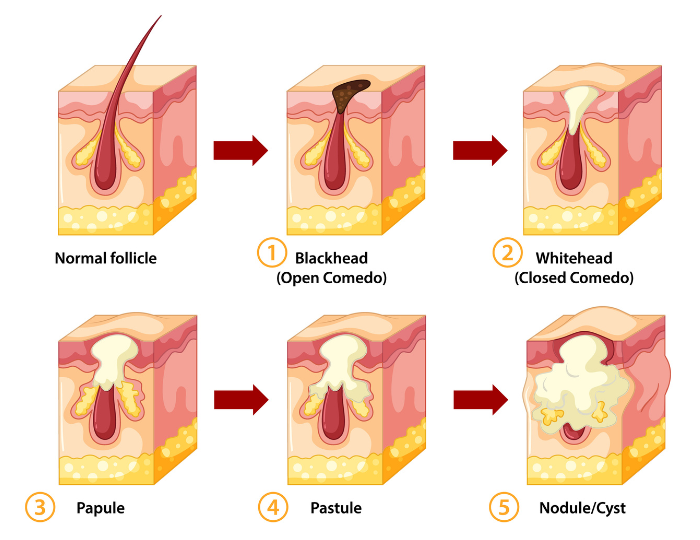How to Effectively Treat Adult Acne with Fotona: Bye Bye Breakouts After Your Teenage Years
When you hear the word "acne," you might think of teenage years filled with concealing makeup, acne medication, and squeaky voices. While acne is common during adolescence, it doesn’t always disappear when we grow up. If you're still dealing with breakouts in your 20s or beyond, it's time to take action. Adult acne is real, but the good news? It can be treated effectively, and you don’t have to live with it forever.
UNDERSTANDING ACNE’S RELATIONSHIP WITH SEBACEOUS GLANDS
Acne is a common skin condition characterized by the formation of pimples, blackheads, whiteheads, and sometimes deeper cysts or nodules. It’s most prevalent in areas of the skin with a high concentration of oil (sebaceous) glands, such as the T-zone, forehead, chin or jawline, and cheeks.
The sebaceous glands play a central role in acne development due to their production of sebum, an oily substance that helps lubricate and protect the skin. However, when the sebaceous glands produce too much sebum or when the pores become clogged with dead skin cells and other debris, acne can occur.
TYPES OF ACNE INFLAMMATION
Acne, a common skin condition, arises from a combination of factors that disrupt the skin's normal functioning. This process unfolds through several interconnected stages:
Various Stages of Acne Formation
Excess Sebum Production: The process begins with the overactivity of sebaceous glands, triggered by hormonal changes, genetics, or other lifestyle influences. This surge in sebum production lays the groundwork for acne development.
Clogged Pores: With excess sebum, our pores can get clogged. Along with dead skin cells and bacteria, it creatives an ideal environment for the growth of acne-causing bacteria known as Propionibacterium acnes (P. acnes).
Inflammation: As P. acnes multiply within the clogged pores, they trigger an inflammatory response from the body's immune system, leading to the redness, swelling, and tenderness associated with acne lesions.
The culmination of excessive sebum production, pore blockage, bacterial proliferation, and inflammation gives rise to various types of acne, such as pimples, blackheads, whiteheads, papules, pastules, cysts, and nodules, each representing different severity of acne.
HOW DOES THE ACNECLEAR DUO BY FOTONA HELP ACTIVE ACNE?
The AcneClear Duo by Fotona is one of the most powerful and effective acne solutions on the market by combining two distinct laser types: Nd:YAG and Er:YAG.
For active acne, Nd:YAG reduces acne inflammation through photoselective absorption and controlled heating effects. Driven by a precisely controlled Nd:YAG laser emitting light energy at a wavelength of 1064nm, this laser resurfacing treatment safely penetrates deep into the skin to precisely target overactive sebaceous glands, employing thermal energy to deliver effective results.
Aside from its thermal penetration capabilities, the Nd:YAG laser also accelerates the healing process and stimulates collagen remodelling, offering a dual-action approach essential for comprehensive acne management.
1. Active Acne Reduction
The laser technology employs controlled heating effects to regulate overactive sebaceous glands, controlling excess oil production to prevent new acne, while simultaneously treating existing acne inflammation.
2. Acne Healing Stimulation
By inducing thermal heating, this effect kickstarts the skin’s natural healing responses, encouraging the growth of new collagen to facilitate the accelerated healing of acne lesions. This promotes faster recovery for clear, acne-free skin.





